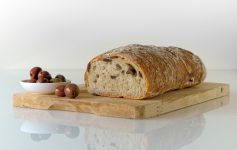My homepage blog on BreakFree Medicine (dr-lobisco.com) discussed the sad statistics of our youth’s physical, emotional, and societal health. There are many aspects to consider for a nation with such a high obesity, depression, addiction, and homicide rate in the young.
Dr. Onusic discussed the multi-factorial aspect of nutrition, vaccinations, environmental exposure, processed foods and the increased use of psychotic medications on our youth’s overall wellness. Dr. Onusic’s very comprehensive overview focuses on how various nutrients and substances affect our biology, biochemistry, and behavior. She specifically discussed how the role of nutrition, such as deficiencies of vitamins A, D, K, B1, B3, B6, B12 and folate, and of minerals iodine, potassium, iron, magnesium, zinc, chromium and manganese can all contribute to mental instability and violent behavior in our children.
She summarizes (emphasis mine):
Many factors in the environment are new to the genome since World War II and have been implicated in violent behavior. These include changes and additions to the food we eat leading to severe nutrient deficiencies, changes in American agriculture and fertility of the soils, more chemicals in the environment, cheaper goods and services, heavy use of personal care and building materials that contain lethal toxins, changes in the American family, vaccination programs and others. Above all the most influential factor in the course of increasing violence has been changes in the American food system and loss of nutrients for children and growing teens.
These changes, coupled with an increase in medicalization of the mind with psychotic drugs, have provoked a crisis in mental health with appalling consequence: mass killings by our youth. It appears that our government officials do not have the political will to deal with or even recognize the factors that have led to this violence.
The Farm Bill and other government actions contributed greatly to the crisis. It will take a grass-roots effort to return the balance in our food system. Recently efforts have sprung up which are slowly turning the tide. These include farmers markets, buying local, farm shares, home gardens, and a return to natural products such as raw milk, pastured eggs and meat. Cooking and eating real food at home for our families cannot be emphasized enough in resolving these major issues.
Meanwhile, none of us is safe. Society as a whole must pay the price for the wholesale poison of our land, our air and our food supply.
Sylvia Onusic, PhD. Violent Behavior: A Solution in Plain Sight. Weston A. Price Foundation (westonaprice.org). April 22, 2013. http://www.westonaprice.org/environmental-toxins/violent-behavior-a-solution-in-plain-sight
Mercola, J. The Violent Side Effects of Antidepressants That Many Ignore. October 3, 2013. http://articles.mercola.com/sites/articles/archive/2013/10/03/antidepressant-side-effects.aspx?e_cid=20131003Z1_DNL_art_1&utm_source=dnl&utm_medium=email&utm_content=art1&utm_campaign=20131003Z1
Family Dinners
In an instant gratification society with iPads and iPhones, many may think that cooking takes too long and family dinners are a thing of the past. However, parents may be missing out on a huge component in the future of their children’s health:
One of the simplest and most effective ways for parents to be engaged in their teens’ lives is by having frequent family dinners,” says Joseph Califano Jr., chairman and president of The National Center on Addiction and Substance Abuse at Columbia University (CASA).
CASA recently reported on a national phone survey of 1,000 teens and 829 parents of teens. Eating dinner as a family helped kids in many ways. It helped them get better grades, and kept them away from cigarettes, alcohol, and marijuana, and more.
10 Benefits of Family Dinners
Toting up all the benefits of frequent family dinners:
- Everyone eats healthier meals.
- Kids are less likely to become overweight or obese.
- Kids are more likely to stay away from cigarettes.
- They’re less likely to drink alcohol.
- They won’t likely try marijuana.
- They’re less likely to use illicit drugs.
- Friends won’t likely abuse prescription drugs.
- School grades will be better.
- You and your kids will talk more.
- You’ll be more likely to hear about a serious problem.
- Kids will feel like you’re proud of them.
- There will be less stress and tension at home.
Davis, J. Family Dinners are Important.WebMD.com. http://www.webmd.com/a-to-z-guides/features/family-dinners-are-important
The Importance of Family Dinners VIII (September 2012)
The CASA white paper reports:
Compared to teens who have infrequent family dinners (fewer than three per week), teens who have frequent family dinners (five to seven per week) are almost one and a half times likelier to say they have an excellent relationship with their mother and one and half times likelier to say they have an excellent relationship with their dad, according to The Importance of Family Dinners VIII.
The White Paper also finds that compared to teens who say they have an excellent relationship with Dad, teens who have a less than very good relationship with their father are:
- Almost four times likelier to have used marijuana;
- Twice as likely to have used alcohol; and
- Two and a half times as likely to have used tobacco.
And compared to teens who say they have an excellent relationship with Mom, teens who have a less than very good relationship with their mother are:
- Almost three times likelier to have used marijuana;
- Two and a half times as likely to have used alcohol; and
- Two and a half times likelier to have used tobacco.
The National Center on Addiction and Substance Abuse at Columbia University (CASA). The Importance of Family Dinners VIII. September 2012.
Therefore, there is hope. Family dinners are something that may require planning, but it is a simple solution to our future generations’ welfare. We can demonstrate healthy eating to nourish their bodies and social connection to calm their brains. If every family did this one thing, we could make a huge societal impact.
For more solutions, please read my BreakFree Medicine blog.



